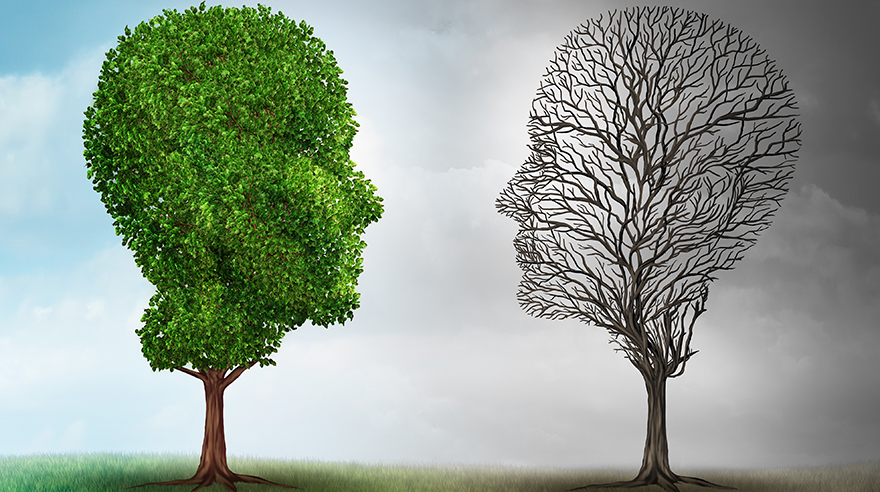
Bi-polar condition is a mental health illness that manifests as severe mood swings. It also affects emotions, concentration, and activity levels. To effectively support a family member with bipolar, its vital for caregivers to understand it and adopt a holistic approach that factors in medical and psychosocial support. Notably, Bipolar is a chronic condition and therefore, learning to manage it is an effective intervention in the long run.An individual with Bi-polar disorder will mostly experience two main episodes, the manic episodes with euphoria, high energy levels, and reckless behaviour, and depressive episodes exhibiting low moods, exhaustion, and self-deprecation. Sometimes there are periods that clients seem to be stable, during which they do not have episodes.
It can be difficult for one to know for sure whether the symptoms they are manifesting are due to Bi-polar. Many people may experience fluctuating moods due to the distressing and energizing events happening around them and thus, it may not necessarily point to the condition. Self-diagnosis is often discouraged. If you suspect that you or a loved one has Bi-polar, visit for clinical psychologist or a psychiatrist for diagnosis. After one has been diagnosed with Bi-polar, below are the interventions one can use to manage it.
Medication Management of Bipolar
The fluctuating emotions can really disrupt an individual. To help them live a normal life, medication is vital. Some of the medication that a psychiatrist will prescribe include mood stabilizers, antipsychotics, and antidepressants for the purpose of alleviating the symptoms and attaining emotional stability. For the medication to work effectively, one must strictly adhere to the drugs schedule. Caregivers must therefore encourage the patients/loved ones to diligently follow the schedule and to visit the psychiatrist for periodic reviews.
Psychoeducation about Bipolar Condition
As noted above, the condition can be complex and if not well understood, the patient, the caregiver and their support system can be distressed and overwhelmed. The psychologist/counsellor/psychiatrist will often educate you about the condition to foster understanding and curb prejudice. However, if you have not been psycho-educated, you can use online resources to learn about the condition. Some of the comprehensive that provide information about Bi-polar disorder include Mayo clinic, America Psychiatric Association and the National Institute of Health. You will learn about the nature of the disorder, symptoms, triggers, and coping mechanisms.
Therapeutic Interventions:
In addition to medication, talk therapy is equally important. The therapist often helps the client to understand the triggers and the resultant emotions, thoughts, and behaviour. The client will be equipped with skills and strategies to manage distressing emotions(negative), thoughts, and behaviour. Some of the therapies used to manage Bi-polar include CBT (cognitive-behavioural therapy), dialectical behaviour therapy and and interpersonal and social rhythm therapy.
Individualized Care Plan
Bi-polar affects people differently and as such, an intervention that works for one person may be ineffective for another. Therefore, it’s vital for every person to understand that unique experience of the condition and thus responding to it effectively. Undeniably, providing personalized care requires is bound to address client’s unique needs, wants and difficulties. Equally, setting up realistic goals together with the client when they are in therapy promotes the sense of being in control.
Social Support:
The importance of a robust social support system cannot be overlooked when managing Bi-polar disorder. The client/patient must have strong ties with non-judgmental family members and friends who they can talk to and who understand them. They also need constant motivation and emotional validation.
Promoting Lifestyle Stability:
Lastly, normalcy in Bi-polar is achieved when the client attains mood stability and they able control their behaviour well. Mood stability can be promoted by factors like sleep, physical activity, or diet. When a client has enough sleep and they have fixed schedules, such regularity contributes to overall wellbeing. The need to incorporate healthy lifestyle and routines must be emphasized to the client.
Conclusion:
Clearly, supporting client with Bi-polar requires a comprehensive and multi-facetted approach that integrates the psychological, social, biological and physical dimensions. By integrating medication management, psychoeducation, therapeutic interventions, individualized care plans, social support, and lifestyle stability, individuals with bipolar disorder can lead fulfilling lives despite the challenges posed by their condition. Empowering clients and their support networks to actively participate in the management of bipolar disorder is crucial for fostering resilience and promoting long-term well-being.